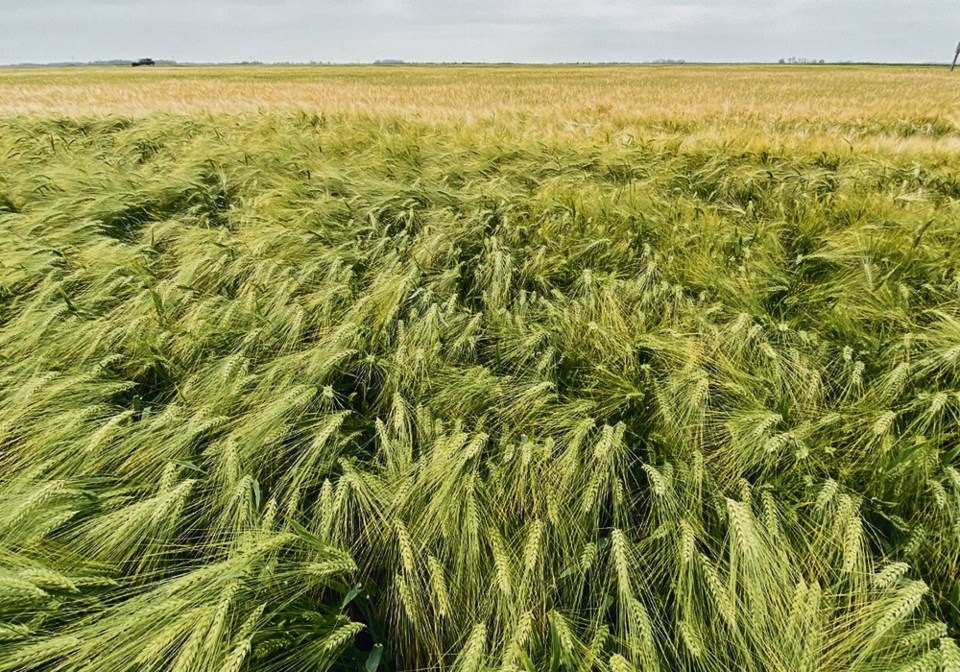WESTERN PRODUCER — In efforts to attract more attention to barley, a producer-led commission is using its reserves to boost research spending to $2.63 million.
Promoting the development of things such as improved varieties of barley is vital to making the crop more profitable for western Canadian farmers, said former vice-chair Jason Skotheim of the Saskatchewan Barley Development Commission (SaskBarley).
“It’s a long-term investment that just compounds year after year … so it becomes incredibly important for producers.”
During a recent annual general meeting, he told participants a report commissioned by SaskBarley showed every dollar invested in variety development resulted in a return of $26.
“And so, if this plays out, it’s bringing in (roughly) $50 million into barley just in the last year alone in future value,” he said. “This is by far the biggest bang for the buck that we can do.”
The report, titled Barley Breeding in Canada — A Path Forward From 2021, was co-authored by Professor Richard Gray, Canadian Grain Policy Research Chair at the University of Saskatchewan.
It said barley production offers numerous benefits for farmers, including improving soil fertility, as well as helping with disease control and weed management. It is also regarded by the report as being less expensive to seed while maturing more quickly than many competitive crops.
Barley can be grown in different environments, climates, and at high altitudes or in marginal areas. It has seen worldwide increases in production, consumption and yield, said the report.
“In contrast to these global trends, Canadian barley production and exports have decreased over the past decade, losing market share to several other crops. The Canadian barley industry is characterized by a slow rate of variety uptake.”
Australia, one of Canada’s strongest competitors as a barley exporter, spends about C$22 million on barley breeding, almost eight times more than Canada, said the report.
Part of the problem is what the report called the uncertainty and capacity pressure faced by public- and producer-funded breeding programs in Canada. For example, it said only three barley breeding centres are available to serve Western Canada.
The programs at one of them, the Field Crop Development Centre in Lacombe, Alta., were transferred to Olds College in 2020 when the Alberta government moved to get out of agricultural research.
The decision involved “a small amount of funding to restructure research activities, and with additional funding coming from producer barley commissions and livestock producers,” said the report.
“This has created significant uncertainty surrounding the future of that breeding program. In particular, it is unclear how pre-breeding research will be funded.”
Although SaskBarley had a total income of $1.79 million in its 2021-22 budget, it decided to spend $2.63 million on research, boosting its total expenses to $3.4 million. The extra cost is to be covered by reserves, with the research funding to be spent between Aug. 1, 2021, and July 31, 2023, executive director Jill McDonald said in an email.
“SaskBarley felt the need to drive interest in barley research as we were not seeing the quantity of projects coming through the traditional avenues of research calls from the Agriculture Development Fund (ADF) in Saskatchewan, or the Agriculture Funding Consortium (AFC) in Alberta,” she said.
The commission has also made investments in infrastructure, which it plans to announce soon, she added.
The report said part of the problem faced by Canada’s barley industry is that the malting sector has been slow to adopt new malting barley varieties.
“Historically, the lack of commercial brewing trials of new varieties has impeded the willingness of the malting industry to adopt new varieties. The growth in micro brewing and the ‘buy local’ movement creates an important opportunity to test new malting barley varieties in smaller markets.”
Despite the fact new varieties are being registered each year, AC Metcalfe and CDC Copeland have dominated the annual market share in Canada despite having been registered more than 20 years ago, said the report. SaskBarley wants to stimulate new, high-quality research into the crop, said Skotheim.
“We are actively funding 44 different research projects, and because of the call, we’re already seeing some renewed interest in barley research. We look forward to seeing some of the results and increasing the number of research applications in the future.”
Although the ratio of $26 in benefits for every $1 invested in barley breeding may seem too good to be true, the report said the results are consistent with hundreds of international studies.
“This strong record of performance suggests that producers need to work with other partners to significantly expand barley breeding efforts. An expansion of breeding effort could involve more extensive use of existing checkoffs, an increase in the per tonne checkoffs, or an increase in royalties used to fund breeding.”
Barley commissions and other producer groups should seek ways to make even larger investments to increase their returns, said the report.
“Addressing the policy risks associated with government funding may require transition away from funding agreements toward the creation of more permanent breeding partnerships.”




